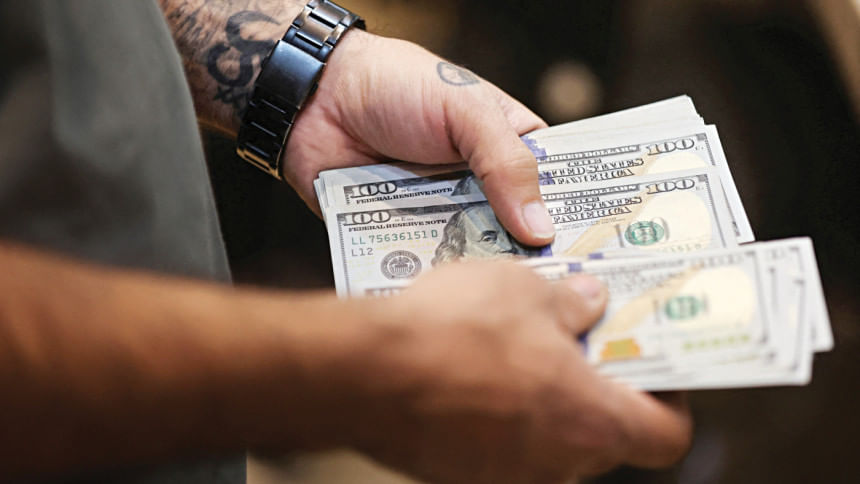Debasement – the deliberate devaluation of the currency unit in terms of real goods and services to render debts less onerous – is as old as money itself. Nicolas Oresme, Europe's first serious monetary theorist, devoted his 1360 "Treatise on Money" to inveighing against medieval sovereigns' addiction to the evil practice: "Can any words be too strong to express how unjust, how detestable it is, especially in a prince, to reduce the weight without altering the mark?"
Six-and-a-half centuries later, investors confronted by the US government's record-high debts, massive deficits, and unashamed desire to see the Federal Reserve cut interest rates are raising the same indignant cry. Like Oresme, they fear that the Trump administration will attempt to stabilise its finances by undermining the real value of the monetary unit in which its debts are denominated. That's why the search is on for the ideal "debasement trade": a means of defending portfolios from the impending devaluation of the dollar.
Investors are right to smell potential trouble ahead. A recent study, by veteran Fed staffer George Hall and Nobel Prize-winning economist Thomas Sargent describes just how dramatically US policy has diverged from historical precedent since the turn of the millennium. Throughout the 19th and 20th centuries, large bursts of public spending were consistently followed by increases in tax revenues to pay down, or at least stabilise, the resulting public borrowing. Since 2000, however, the massive debts incurred in response to the dotcom bust, the Great Financial Crisis, and the Covid pandemic have been met with an almost uninterrupted string of primary fiscal deficits. The closest historical parallel that Hall and Sargent can find to this structural loss of fiscal continence is the profligacy of the Kingdom of France in the decades leading up to 1789. Given that the paper currency issued to finance the subsequent revolution – the infamous assignats – lost 99.5 percent of its value, over the next seven years, that's hardly an auspicious precedent.
The simplest and most ancient hedge against debasement is to desert the domestic currency and swap into foreign money backed by sounder collateral instead. In the medieval period, that meant switching to full-weight gold or silver coins minted by mercantile superpowers such as the Venetian Republic, instead of degraded local ones. The most extreme modern parallel is reallocating portfolios to gold or cryptocurrencies such as bitcoin. The former represents a complete rejection of trust-based finance, while the latter rests on total confidence in digital rules. For most investors fleeing the US dollar, however, the simplest equivalents of the Venetian ducats of yesteryear are the currencies of countries whose public finances are in sturdier shape than Uncle Sam's.
There is no shortage of those. Both the Australian and the New Zealand dollars are backed by sovereigns whose public debt as a percentage of GDP was less than half that of the US at the end of 2024, according to the Bank for International Settlements. The currencies of Norway, Sweden and Denmark, where government borrowing is respectively 45 percent, 34 percent and 30 percent of national output, are even more compelling on this basis. The best of the lot is the Swiss franc: the Alpine nation's public debt is a mere 26 percent of GDP.
Of course, currency valuations are forward-looking – and foreign exchange traders have already been bidding up these currency pairs aggressively this year. The New Zealand and Australian dollars are up 3 percent and 7 percent respectively against the greenback, while the Nordic currencies have appreciated by between 14 percent and 18 percent. Demand for Switzerland's sovereign risk is so strong that the Swiss franc is up 14 percent against the US dollar, while the yield on government bonds maturing up to five years from now has turned negative again. Investors hoping to protect themselves by shifting into the currencies of fiscal prudes thus need to take account of the fact that fears of US dollar debasement are already in the price.
There is a further, and more fundamental, problem with this flight to fiscal quality. In modern economies, most monetary liquidity is issued not by royal mints or even central banks, but by the commercial banking system – and increasingly by a vast range of private capital market institutions as well. As a result, the assets backing contemporary currencies are not just government debt, but loans to households and companies too. The risk that unsustainable debts lead directly to expropriation by inflation must therefore be measured both by public and private leverage as well.
Viewed through this lens, the leaderboard of debasement risk looks rather different. New Zealand and Australia have only modest public debt, but credit to their non-financial private sectors totals 160 percent and 175 percent of GDP, respectively. In Norway, Sweden and Denmark the ratio is between 217 percent and 240 percent. Switzerland's mountain of private credit is the most imposing of all, at nearly 270 percent of GDP. The world's fiscal saints, it turns out, are also its financial sinners.
Stratospheric private sector leverage is historically an even surer driver of debasement than public indebtedness. A recent BIS study, dubs the interest and principal payments of a country's private non-financial sector as a proportion of its income – the so-called aggregate Debt Service Ratio (DSR) – a "nearly perfect indicator" of impending financial doom. The DSRs of Australia (19 percent), Sweden (22 percent), and Norway (26 percent) were all flashing red as of early 2025. According to the central bankers' bank, it is the currencies backed by these overindebted private sectors that latter-day Oresmes should be fretting about.
There is however one country whose private sector leverage, at only 142 percent, currently sits at a 23-year low. What is more, its DSR – at a mere 14.5 percent – is comfortably within the safety zone. That country is the United States. Perhaps the best debasement trade is to stick with the mighty US dollar after all.

